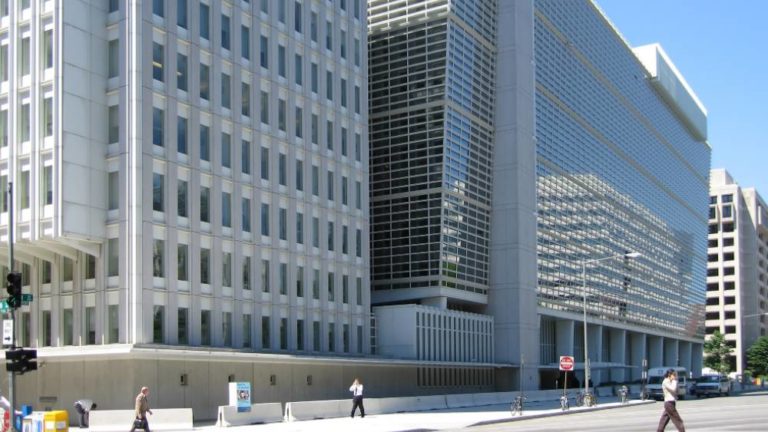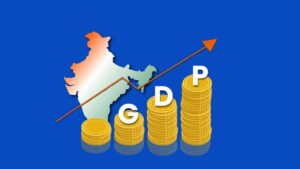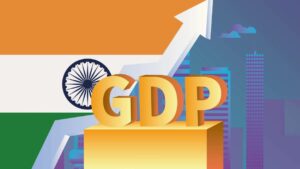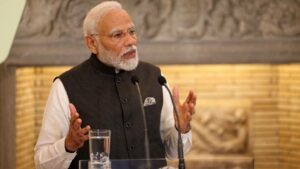India’s growth continues to be resilient despite some signs of moderation in growth, says the World Bank in its latest India Development Update, the World Bank India’s biannual flagship publication.
The Update notes that although significant challenges remain in the global environment, India was one of the fastest growing economies in the world. The overall growth remains robust and is estimated to be 6.9 percent for the full year with real GDP growing 7.7 percent year-on-year during the first three quarters of fiscal year 2022/23. There were some signs of moderation in the second half of FY 22/23. Growth was underpinned by strong investment activity bolstered by the government’s capex push and buoyant private consumption, particularly among higher income earners. Inflation remained high, averaging around 6.7 percent in FY22/23 but the current-account deficit narrowed in Q3 on the back of strong growth in service exports and easing global commodity prices.
The World Bank has revised its FY23/24 GDP forecast to 6.3 percent from 6.6 percent (December 2022). Growth is expected to be constrained by slower consumption growth and challenging external conditions. Rising borrowing costs and slower income growth will weigh on private consumption growth, and government consumption is projected to grow at a slower pace due to the withdrawal of pandemic-related fiscal support measures.
Although headline inflation is elevated, it is projected to decline to an average of 5.2 percent in FY23/24, amid easing global commodity prices and some moderation in domestic demand. The Reserve Bank of India’s has withdrawn accommodative measures to rein in inflation by hiking the policy interest rate. India’s financial sector also remains strong, buoyed by improvements in asset quality and robust private-sector credit growth.
The central government is likely to meet its fiscal deficit target of 5.9 percent of GDP in FY23/24 and combined with consolidation in state government deficits, the general government deficit is also projected to decline. As a result, the debt-to-GDP ratio is projected to stabilize. On the external front, the current account deficit is projected to narrow to 2.1 percent of GDP from an estimated 3 percent in FY22/23 on the back of robust service exports and a narrowing merchandise trade deficit.
Europe and Central Asia Region
On the other side, Russia’s invasion of Ukraine, now in its second year, continues to upend the Europe and Central Asia region’s dynamic emergence from the COVID pandemic. Growth in the region collapsed to 1.2% in 2022 from 7.1% in 2021, as supply chain disruptions reduced production and international trade. Inflation surged, prompting central banks to tighten monetary policy to rein in huge price increases.
In 2023, economic activity in the region is likely to remain subdued because of the continuing fallout from the invasion, high, if moderating, inflation, and tight financial conditions. Output in the region is projected to increase by 1.4% this year. Excluding Russia and Ukraine, growth in the rest of the region is likely to weaken to 2.4% in 2023 from 4.7% in 2022. Although better than previously anticipated, these projections are subject to profound uncertainty, with expectations of the invasion to continue in the short term.
The outlook remains highly uncertain. Growth in 2023 may be weaker if the war caused by Russia’s invasion of Ukraine escalates further, food and energy prices continue to increase, interest rate hikes accelerate globally or in the region, or there is a sudden reversal of capital flows to the region. There could be spill overs to growth from the recent developments in the U.S. and European banking sectors.
Prior to Russia’s invasion of Ukraine, inflation was already rising in 2021 and early 2022 as countries in the region reopened following the COVID-19 pandemic. The release of pent-up demand from the 2020 recession revealed stark shortages and supply chain disruptions, with bottlenecks continuing to push up inflation in 2022.
The analysis finds that inflation measured by the Consumer Price Index masks substantial variations in the inflation rate experienced by households with different consumption patterns. Due to differences in both consumption patterns and varying price increases across goods and services, inflation was 2 percentage points higher for the poorest 10% of the population in the region compared to the wealthiest 10%. This difference exceeded 5 percentage points in some countries. The poorest households experienced a true cost-of-living crisis in 2022.
Governments across the region responded to the cost-of-living crisis with larger social assistance and subsidies, including moratoriums on energy price increases, caps on electricity and natural gas prices for households and businesses and reduced public transport fees. The median energy-related fiscal package in the region’s countries amounted to 2.7% of GDP last year. These measures notwithstanding, some resource-rich countries benefitted from higher commodity-related revenues and others from a surge in revenues because of stronger growth. Most countries in the region are set to step up fiscal consolidation efforts in 2023 as emergency support measures are unwound.
One lesson from 2022 is that policies that do not account for the different inflation rates faced by households of different incomes are likely to provide inadequate support to vulnerable groups and may end up being both inefficient and less effective.





















